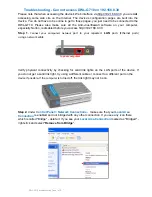
503
Examples
# Manually save the security logs in the security log file buffer to the security log file.
<Sysname> security-logfile save
The contents in the security log file buffer have been saved to the file
flash:/seclog/seclog.log.
Related commands
info-center security
-
logfile directory
authorization-attribute
(
Security Command Reference
)
snmp-agent trap enable syslog
Use
snmp-agent trap enable syslog
to enable SNMP notifications for log messages.
Use
undo snmp-agent trap enable syslog
to restore the default.
Syntax
snmp-agent trap enable syslog
undo snmp-agent trap enable syslog
Default
The device does not send SNMP notifications for log messages.
Views
System view
Predefined user roles
network-admin
Usage guidelines
This command enables the device to send an SNMP notification for each log message it outputs.
The device encapsulates logs in SNMP notifications and then sends them to the SNMP module and
the log trap buffer.
You can configure the SNMP module to send received SNMP notifications in SNMP traps or informs
to remote hosts. For more information, see
Network Management and Monitoring Configuration
Guide
.
To view the traps in the log trap buffer, access the MIB corresponding to the log trap buffer. The log
trap buffer size can be set by using the
info-center syslog trap buffersize
command.
Examples
# Enable the device to send SNMP notifications for log messages.
<Sysname> system-view
[Sysname] snmp-agent trap enable syslog
Related commands
info-center syslog trap buffersize
















































